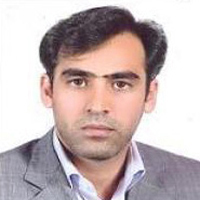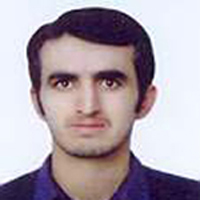Investigating and Analyzing Social Justice in terms of Accessibility to Municipal Services (Case Study: Accessibility to Junior High School Educational Services in Miandoab
Author(s):
Abstract:
Introduction
Considering the rapid growth of the world population, it is predicted that in the future the majority of this vast population will be concentrated in cities, particularly cities of developing countries. According to United Nations prediction in 2000, the world population will surpass 2.06 billion by 2030. This population growth will be specifically more evident in third world countries. On the other hand, continuity of this trend and the rapid growth of urban population in these countries will usher in some problems such as: increase in poverty in cities, insufficient access to housing and basic municipal services and etc. Therefore, research regarding promoting justice apropos accessibility of services, particularly educational services is one of the necessities of the present age. In this study, Miandoab has been selected as the city under study; according to the latest physical divisions, Miandoab boasts 6 municipal districts and 30 neighborhoods. Similar to other Iranian cities, Miandoab has experienced a rapid growth in urbanism following land reforms. Taking into account the rapid growth of the population in this city, the need for educational services and facilities is becoming ever more urgent. Thus the need for paying attention to the way municipal services and facilities are distributed, in line with principles of social justice, is being felt more than before.Theoretical Framework: One of the major concepts which this research accentuates is that of social justice in cities. Social justice is a modern concept which concerns providing equal opportunities, living along with chances. Robert Putnam defines social justice as equality of civil obligations and responsibilities in a society and equality of spread of problems among various groups in society. Within the context of human rights, social justice is considered as competition. For Baldry, social justice involves considering both personal and individual shared rights and obligations. However, David Harvey is the first geographer who in his invaluable book entitled social justice and the city uses the concept of social justice as promoting public good, a criterion for income distribution in various locations, fair allocation of resources and fulfilling peoples basic needs.
Methodology
The present study is a practical one which has been conducted using an analytical-comparative methodology. For the purpose of data analysis, entropy coefficient for the manner population distribution in the city, Morans index in ARC GIS for the pattern of school distribution throughout the city, ELECTRE, which is one of the most important methods in multi-criteria decision making, for rating municipal districts in terms of accessibility to mentioned services and finally, Williamsons model for evaluating the situation of each district, in terms of availability of those services were used.Findings and
Discussion
The result of the entropy coefficient, which was 0.95 for the entire city, is indicative of balanced distribution of the population throughout the six districts of the city. On the contrary, the pattern of school distribution in the city, which was obtained using Morans index, shows a random, casual distribution of the educational services throughout 99 percent of the city. With regards to the findings of entropy coefficient and Morans index and considering the two factors of interest (population and junior high school educational services) along with the manner of their distribution in the city, it becomes clear that services, taking the citys population distribution in mind, have not been allocated justly. To shed more light on the issue, Williamsons model was used. The result of this model, which was obtained using population and (junior high school) educational resources per capita, reveals that out of six municipal districts, two districts, that is districts one and two respectively, are in a balanced situation in terms of accessibility. On the contrary, districts four, five and six are having an unbalanced situation. Finally, the results of the ELECTRE model which was used for rating municipal districts in line with seventeen educational criteria (for junior high school) shows that among the six districts, district four occupies the first place in terms of accessibility of the studied indicatorsConclusion and Suggestions: The present study was a brief examination for evaluating justice in Miandoab. Using the results of various methods that were incorporated to evaluate justice, inequality and accessibility throughout the city, it was revealed that the distribution of educational resources and municipal districts level of accessibility to such services is unjust and that the majority of the residents of the city do not have proper access to these services. Therefore, following suggestions are made to improve the status quo throughout the districts of the city: It is necessary to plan and allocate municipal facilities in accordance with the capacity, potential and limitations of each district. In other words, it is obligatory to offer educational services considering the population of each district and the population in need of education.
District one of Miandoab has recently joined the city and land-uses together with municipal services are yet to be fully located in this area of the city. Thus the necessity for paying attention to this district for keeping balance and justice among municipal districts is of paramount importance.
District two is another district where the majority of residents have immigrated from adjoining villages. To put it differently, it is a district which in comparison with other ones has expanded and grown without any prior planning or adherence to a large number of municipal standards and criteria. Consequently, paying more attention to this district should be high on the agenda for municipal planners and authorities.
Keywords:
Language:
Persian
Published:
Journal of Geography and Urban Space Development, Volume:3 Issue: 1, 2016
Pages:
33 to 51
magiran.com/p1622824
دانلود و مطالعه متن این مقاله با یکی از روشهای زیر امکان پذیر است:
اشتراک شخصی
با عضویت و پرداخت آنلاین حق اشتراک یکساله به مبلغ 1,390,000ريال میتوانید 70 عنوان مطلب دانلود کنید!
اشتراک سازمانی
به کتابخانه دانشگاه یا محل کار خود پیشنهاد کنید تا اشتراک سازمانی این پایگاه را برای دسترسی نامحدود همه کاربران به متن مطالب تهیه نمایند!
توجه!
- حق عضویت دریافتی صرف حمایت از نشریات عضو و نگهداری، تکمیل و توسعه مگیران میشود.
- پرداخت حق اشتراک و دانلود مقالات اجازه بازنشر آن در سایر رسانههای چاپی و دیجیتال را به کاربر نمیدهد.
دسترسی سراسری کاربران دانشگاه پیام نور!
اعضای هیئت علمی و دانشجویان دانشگاه پیام نور در سراسر کشور، در صورت ثبت نام با ایمیل دانشگاهی، تا پایان فروردین ماه 1403 به مقالات سایت دسترسی خواهند داشت!
In order to view content subscription is required
Personal subscription
Subscribe magiran.com for 70 € euros via PayPal and download 70 articles during a year.
Organization subscription
Please contact us to subscribe your university or library for unlimited access!



